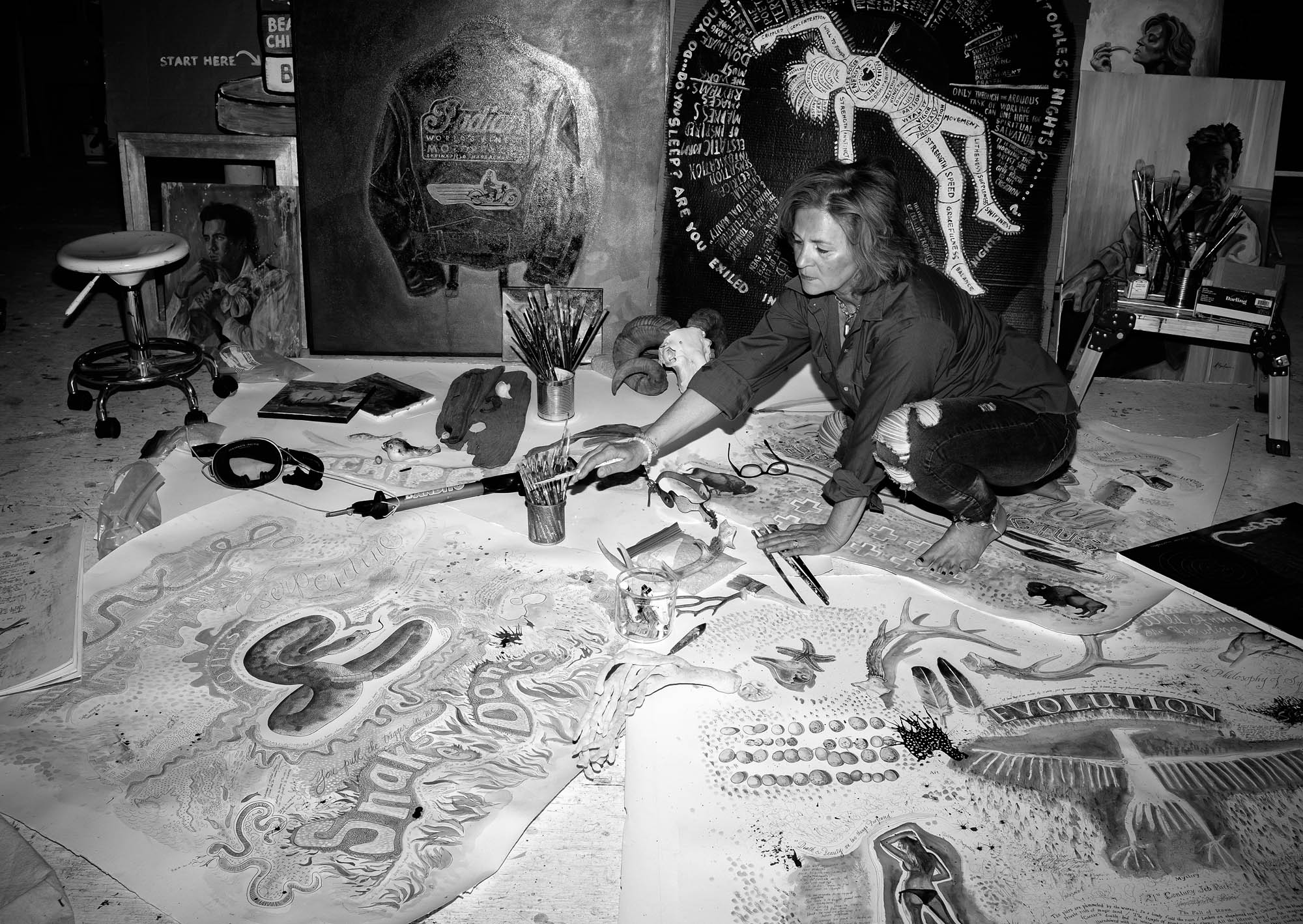
By Philip Eliasoph
VENÜ sat down with the artist in her lovely studio/home in Essex, Connecticut for a chat. Barbieri’s stream of consciousness is well tuned as she navigates between her instinctive artistic vision and the ongoing challenge to put on a canvas the totality of her spirit.
PE: You’ve been on an artistic journey now for over 30 years, but these new images are truly a career pivot and re-direction. What inspired you to create this new body of work?
MB: These began purely by chance, when my husband Michael and I were out in New Mexico. The rocks and plateaus are all these amazing sediment layers of orange and violet and there is a lake in the distance that’s like a slice of turquoise. I came across some cattle bones that were all bleached by the sun under those twisty juniper trees. We made campfires at night, and wolves were howling very close out on the Mesa… I could hear the ground under my boots when I walked, and everything echoed. I stood in this spot this one afternoon and it all came flooding over me, the sheer beauty of it all, and how it all used to be covered by an ocean. The sun is blazing and everywhere. The silence has a very loud sound out there somehow. There’s that feeling you get regarding the passage of time and everything seems to become very clear.
I always keep a journal where I make little notes and sketches and things, and then I make little notations and arrows over everything. When I got back to my studio, I took out that notebook and a big thick sheet of paper one night, I rolled it out on my studio floor and dipped my pen into some ink and started transcribing… everything I saw and felt out there poured into that piece. I was working for hours and hours late one night and I didn’t even know what I was doing, really without thinking. Then I stupidly knocked over the pot of ink onto the paper. — I’d been working for six hours and I couldn’t bear tossing it, so I continued. —- I worked on that for three more weeks every single night. That piece was “How the West was Won” and that was how it all started.
PE: How has the wisdom of the ancients and 20th century mystics, thinkers and visionaries enhanced your visual thinking?
MB: Well because I am forever reading dead authors and all kinds of strange obscure books and writings, they mean a very lot to me.
I think I always resisted anything “New Age” as far as crystals, dream regression thinking “anything of the moment” I was always very suspicious of — But then I always had this very strong fascination with myths and spirituality in other cultures from the past, especially Native American and also the Greeks. So much from poetry. Funny how you can go back to when you were a little child and see where your interests began, although I have no idea why.
So I think words, more than anything, have fused my imagination, from books, dreams, philosophers, holy men, rogues, all of those are what are floating around in my brain at night when I lay down and go to sleep. I think words and the way they appear on paper and the sound languages make when spoken or linked together become visual works of art themselves. I still think we are extremely linked to the past more than we are aware of. There’s something very primal there… Visionaries saw things and poets wrote about them and artists painted them on the walls of caves. When I come across a petroglyph somewhere out in the desert, out there all on its own, I feel for some reason being very attuned to something there that can’t be seen.
I find myself formulating plots and plans of a concept I have and how I will paint it as I drift off to sleep. Those things, and the books I read and the dreams I have all find their way into these paintings. It gets all jumbled up and comes out in some very interesting ways.
PE: What are these artworks communicating at this time in your career?
MB: This painting series has been complete freedom for me. It really comes so deep from within my unconscious that a lot of times I’m not even sure where these things have come from. For me it’s so different because when I’m starting a painting, I usually have a pretty fair idea of where I want to go as far as direction, but with these pieces they are more or less unplanned. Like maybe I have a word or a symbol I want to use, or a thought or an image that I put down and then I let the flow take hold. Kind of like you just try to empty your mind.
You get into a sort of meditation when you’re alone in your studio working very late into the night. Sometimes I don’t really know exactly what I’ve done until I walk back in the studio the next day. I’ll be looking at something and then I’ll find a piece of verse from the music that I’ve been listening to among all the text and scribbles that I didn’t even remember putting down. So I think everything ends up bubbling up to the surface in different ways. I’m just gearing up to continue what I’m doing now, I have plans to keep working on these for a long time before I’m even close to exhausting the possibilities, if ever. And to keep going back out West to soak up as much as I possibly can. It’s really something I need to do.
Melissa Barbieri: Memories, Dreams & Archetypes
November 21, 2020 – January 24, 2021 (Click for a video discussion recapping this exhibition with Melissa Barbieri and Philip Eliasoph, courtesy Lyman Allyn Art Museum)
This exhibition showcased the work of Connecticut artist Melissa Barbieri, highlighting a recent series of her large-scale works on paper. These calligraphic and diagrammatic works are transcribed visions that combine text, symbols, words, and imagery. Using watercolor, India ink, and aquarelle wash, this series of paintings was influenced by ancient scrolls, codices, hide and ledger paintings, and recorded in an uninterrupted flow of thought-stream consciousness. They explore the dichotomy and duality of the ocean and the desert as mirrors connecting them to one another while bringing the unconscious to the conscious realm.
Born in Fairfield, CT, Barbieri paints out of her studio in Essex in the Connecticut River Valley. She studied classical painting in the Italian Renaissance manner with Frank Covino before attending the Ringling College of Art and Design.
Her work is fueled by her life-long fascination of both the vast romantic desert of the West and the dark power of the deep sea. Employing comparative mythology, symbolism, and archetypes, she explores how these elements are interwoven in ancient, classical, and modern culture and reside in our psyche today.
www.lymanallyn.org | www.melissabarbieri.com

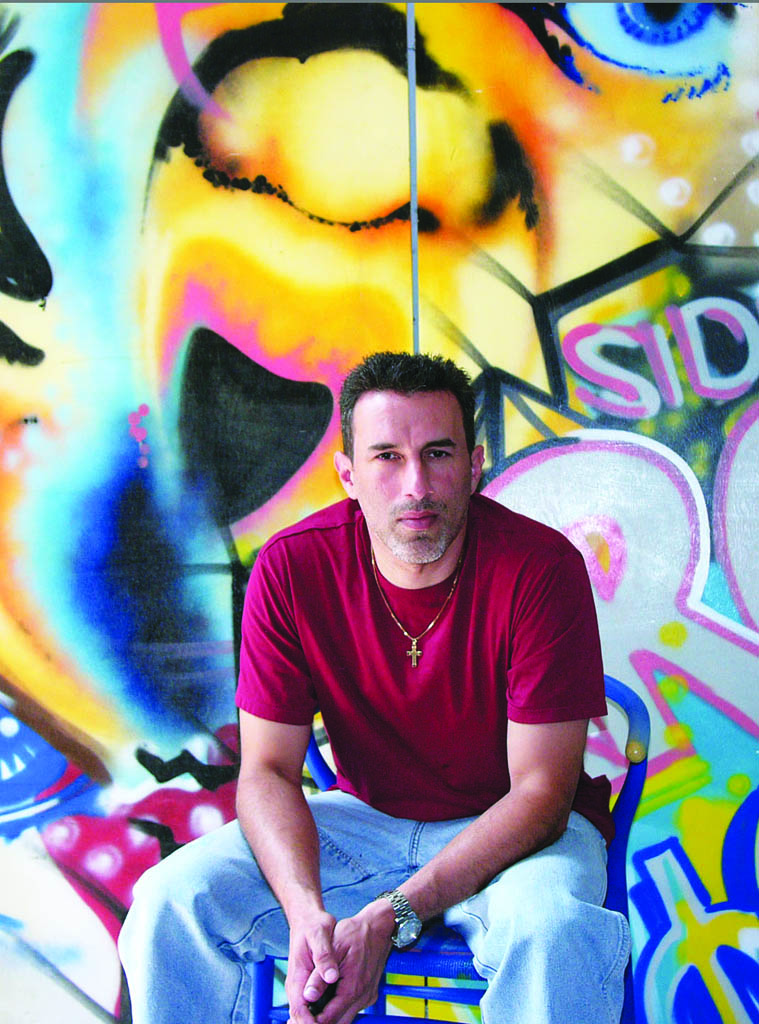
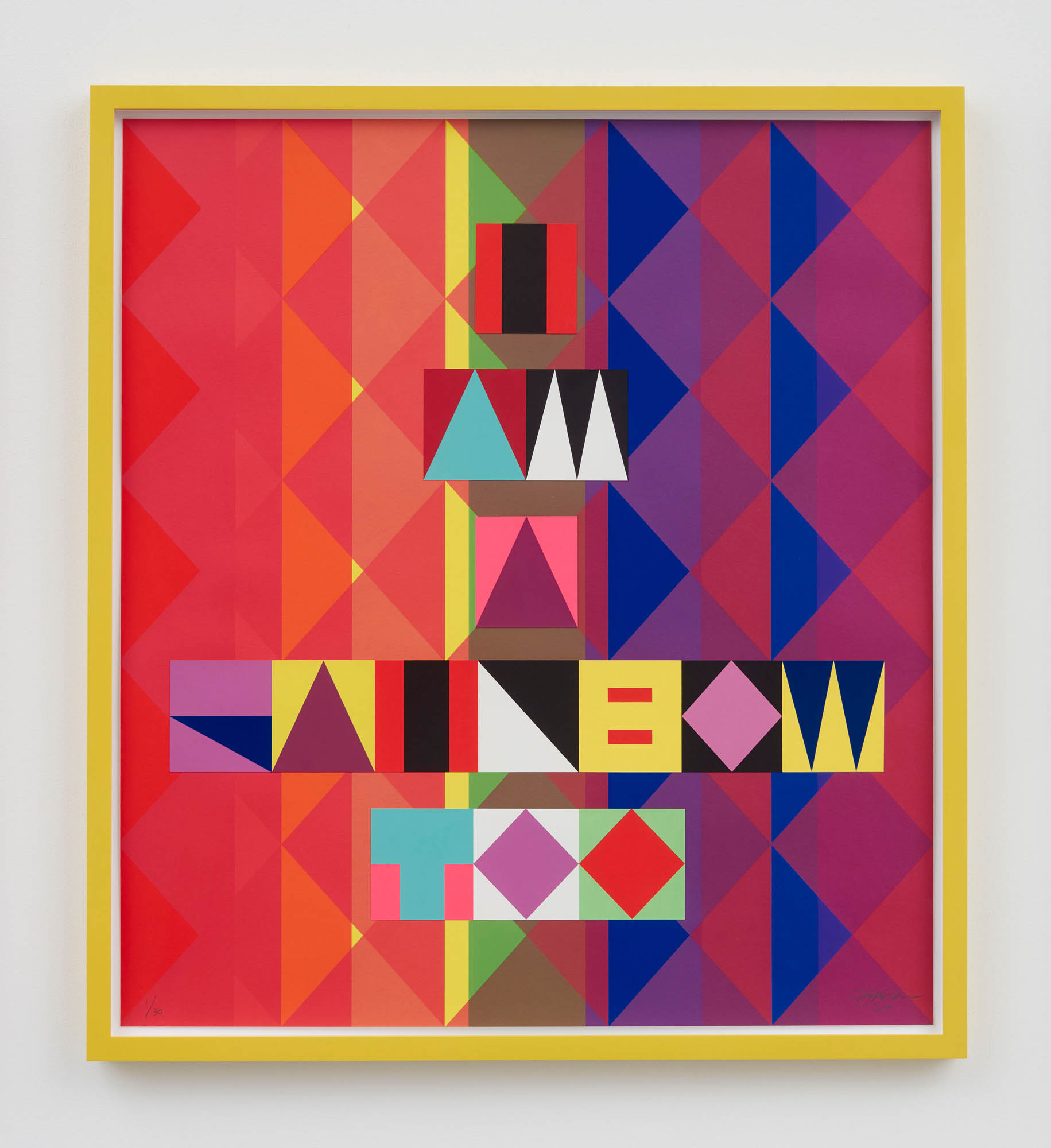
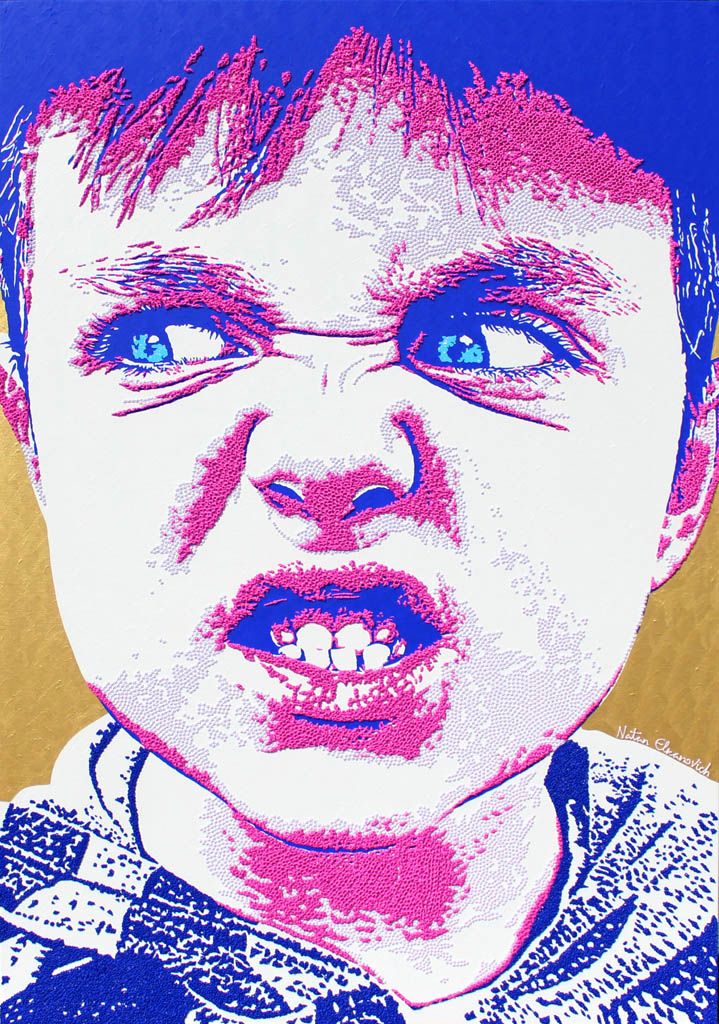
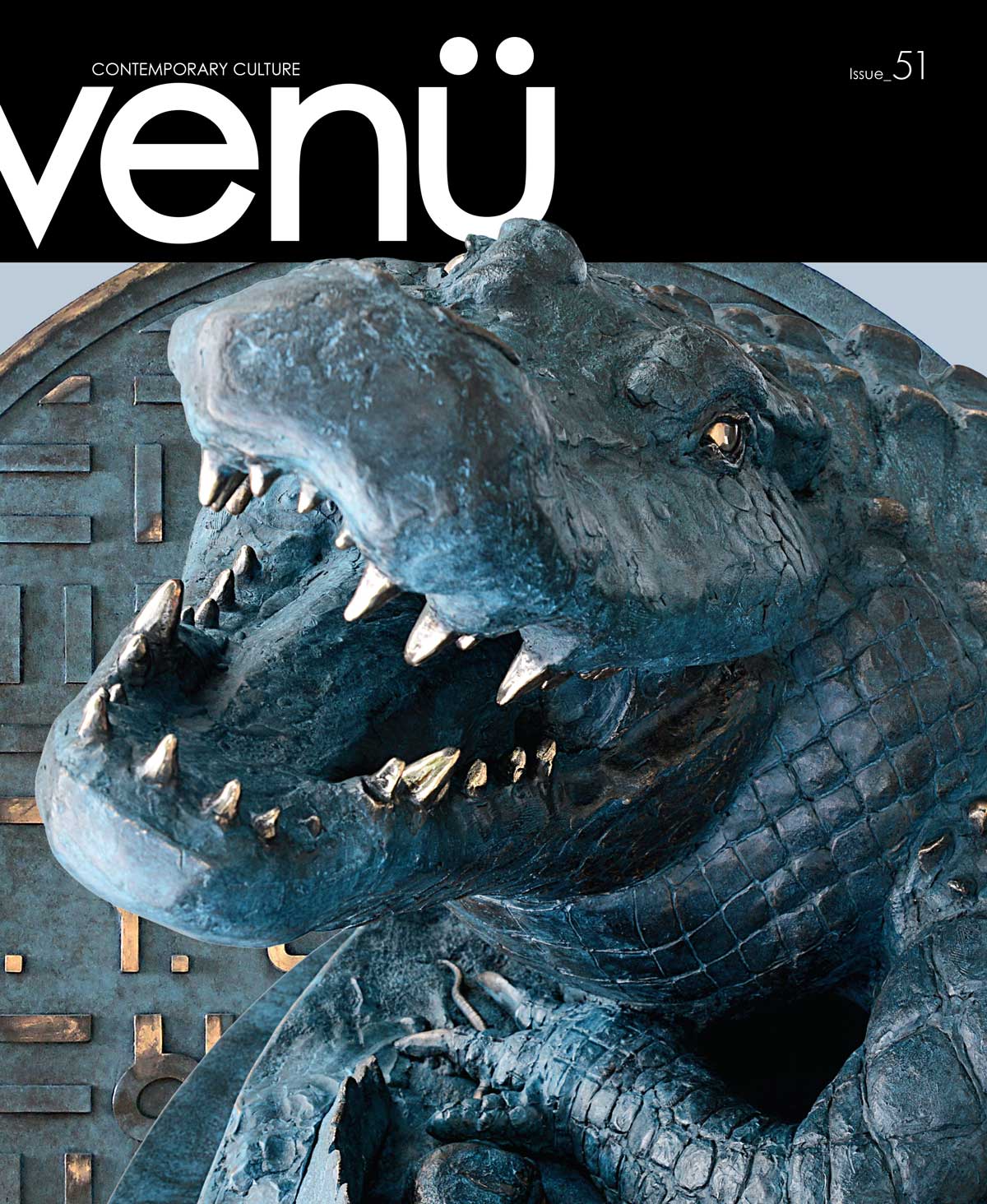
Leave a Reply